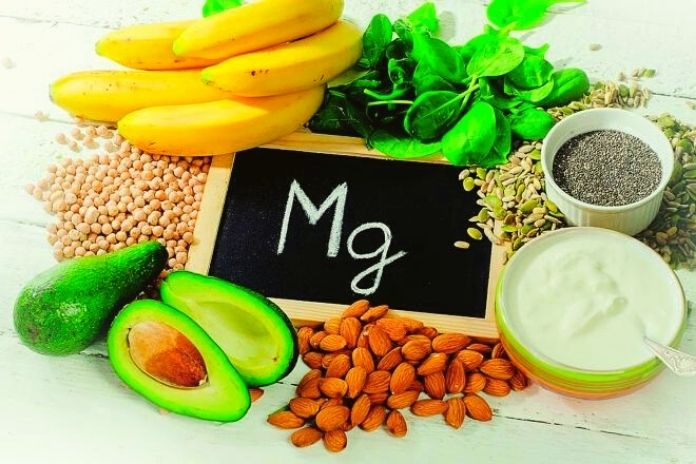Magnesium is a natural power mineral. It not only ensures stable bones and teeth but is also essential for our muscles. Here are the top 10 foods containing magnesium. Magnesium is one of the essential minerals. It fulfills several crucial functions in the body. In addition to the excitation lines of the nervous system, it is also responsible for muscle work. It is also required for bone formation and energy metabolism and is a coenzyme for as many as 300 enzymes. We eat too little magnesium food. The body tends to have calf cramps, nervousness, restlessness, poor concentration, migraines, or cardiac arrhythmias.
The German Nutrition Society recommends that an adult woman aged 25 overtake around 300 mg of magnesium per day with food. In men, the value is slightly higher and is 350 mg. The best supply works with magnesium foods because it can be used by the body best to absorb the mineral.
There Is A Lot Of Magnesium In These Foods
Magnesium is found in plant foods such as whole grains, nuts, and seeds. And mineral water is also one of the best sources of magnesium. Vegetables, fruit, dairy products, meat, and fish, on the other hand, contain only small amounts of magnesium.
The good news: we usually have a good supply of magnesium. However, since the mineral is excreted through sweat, athletes can have a short-term deficiency. Likewise, people who take laxatives, glucocorticoids, or the pill. In such cases, foods containing magnesium should be on the menu. Here are 10 of them!
Dark Chocolate
Yay! When it comes to magnesium content, dark chocolate is way ahead! 100 g with 50 percent cocoa content have 195 mg magnesium, the variant with 70 percent cocoa content even 230 mg. Cocoa is responsible for this. So drink a cup of it now and then and use the very dark varieties for chocolate.
Quinoa
If you look at the magnesium content of cereals, quinoa and amaranth are in the top positions. The tiny grains from the South American Andes contain a lot of magnesium: 100 g quinoa approx. 275 mg, 100 g amaranth even 310 mg magnesium.
Oatmeal
There’s nothing like oatmeal when it comes to a healthy start to the day. This also applies to the magnesium content. 100 g of oatmeal has 130 mg of magnesium. If you like, sprinkle a little flaxseed or wheat bran on top. They are also very rich in magnesium.
Whole Grain Rusks
Whole grain and crispbreads aren’t bad when it comes to magnesium. However, the unbeaten front runner is whole meal rusks with 180 mg magnesium per 100 g portion.
If you want to boost the magnesium content of bread a little, you can buy sunflower or pumpkin seed bread. Both oil seeds are very rich in magnesium and provide that extra portion of minerals.
Whole Wheat Pasta
It tastes better and is even healthier than its light counterpart: whole grain pasta. 100 g contains 125 mg of magnesium. For comparison: Plain white pasta only has 40 mg of magnesium. The next time you go shopping, grab the whole wheat spaghetti. They taste a little nutty and go particularly well with tomato sauces.
Kidney Beans
Legumes are rich in protein and minerals – including magnesium. 100 g kidney beans contain a good 150 mg magnesium. White beans with 140 mg, a little less. The front runner, however, is the soybean with 220 mg of magnesium per 100 g. Lentils still bring it to 130 mg.
Tofu
Tofu is made from soy, and soybeans are high in magnesium. So it’s not surprising that tofu also has a lot to offer: 100 g has 100 mg of magnesium. That is significantly more than meat and fish, which contain an average of 20 to 30 mg of magnesium.
Cashew
Nuts are little fat bombs. But they’re also relatively high in protein and various minerals like magnesium. First and foremost is the cashew nut. 100 g has a good 270 mg of magnesium! Hazelnuts and Co. are not bad either, as are these seeds and kernels:
- 100 g sunflower seeds: 420 mg magnesium
- 100 g poppy seeds: 330 mg magnesium
- 100 g flaxseed: 325 mg magnesium
- 100 g pumpkin seeds: 285 mg magnesium
- 100 g pine nuts: 235 mg magnesium
- 100 g peanuts: 160 mg magnesium
- 100 g hazelnuts: 155 mg magnesium
Peanut Butter
In the United States, peanut butter can be found on every breakfast table. The fatty spread has also been a hit in Germany for several years. On the one hand, peanut butter is a real calorie bomb. On the other hand, it tastes too good and contains an impressive 180 mg of magnesium per 100 g. Not bad!
Peanut butter in its pure form is particularly healthy. That means: without sugar or preservatives.
Dried Fruits
Fresh fruit is not particularly rich in magnesium. The only exception is the prickly pear with 85 mg magnesium per 100 g. Dried fruits, however, are different. They contain an average of 50 mg of magnesium.
- 100 g dried banana: 100 mg magnesium
- 100 g dried fig: 70 mg magnesium
- 100 g dried date: 50 mg magnesium
- 100 g dried apricot: 50 mg magnesium
ALSO READ: Fit-Again Quickly! 6 Great SOS Tips That Will Drive Away Any Cold
